What is Engineered Hardwood Flooring?
April 3, 2024 | By Bruce Product Expert
Luxury vinyl tile (LVT) offers an increasingly popular vinyl alternative to hardwood. Its image layer reflects the appearance of solid hardwood with often astounding closeness.
Laminate flooring presents a low-cost hardwood knock-off. It, too, does a super job of approximating the look and feel of hardwood.
Unfortunately, neither of these options delivers the time-worn look and feel of genuine hardwood flooring. However, one flooring option captures hardwood’s appeal to a tee: engineered hardwood flooring.
Engineered hardwood is the closest thing to solid hardwood, and with good reason. It uses natural hardwood as the floor’s surface. If you haven’t heard of it, let’s answer the obvious question: what is engineered hardwood flooring?.
How is Engineered Hardwood Made?
Engineered hardwood flooring takes a similar approach to LVP and laminate by using a layered approach. But here’s the big difference. Whereas they use photography to capture the look of hardwood, engineered hardwood uses a real hardwood veneer.
That veneer can be oak, maple, hickory, or hardwood species. So you are, indeed, getting an authentic hardwood floor. Underneath that veneer is where the difference lies versus a solid wood floor.
The core layer comprises numerous layers of plywood. These layers are cross-stacked, glued, and pressed in the plywood core. This crosshatching provides stability, reducing the wood’s tendency to expand and contract with temperature and humidity changes. That’s often a concern with solid hardwood, its water resistance.
Engineered hardwood flooring removes that concern. It offers improved water resistance. Indeed, some engineered hardwoods even provide waterproofing.
For example, Bruce® offers Dogwood® densified wood flooring. It’s an engineered flooring product that uses hardened wood on its surface to make it tremendously resilient to scratches and denting. It also has waterproofing baked in, making it a perfect flooring option for pets.
Quality Engineered Hardwood Floors Have More Plys
Consider the number of plys or core layers when shopping for engineered hardwood. For example, a 3-ply engineered flooring plank has the top veneer, one layer of plywood, and another veneer on the bottom.
The upside is that a 3-ply flooring costs less. However, it’s not nearly as durable as you’d likely want. It’s more inclined to warp with humidity or temperature changes. Moreover, its thinness makes the tongue and groove components more fragile.
Conversely, an 11-ply plank has the bottom and top veneer but owns nine plywood layers between them. As a result, it creates an infinitely more stable core that delivers much better performance.
Additionally, the additional plys make it better for radiant heating systems. It also makes the flooring more durable and usable in high-traffic areas like family rooms.
The Wear Layer Plays a Big Role in Engineered Wood Floors
In addition to looking at the number of plys, you’ll want to focus on an engineered floor’s wear layer thickness. The thicker the wear layer, the better because it enhances the floor’s longevity.
Veneer or wear layers can range from thin (less than 1 mm) to thick (6 mm). A thicker veneer adds to the floor’s lifespan because you can sand and refinish it more often.
For example, sanding removes roughly a 1 mm layer from the floor’s surface. So, a 1 mm thick veneer prohibits you from redoing the floor. However, with a 3 mm wear layer, you can sand and refinish an engineered wood floor three times. That can add another 50 years to your floor’s life.
That gives engineered hardwood another advantage over LVP and laminate. When each of those has worn out, you’ll need to replace them.
Typically, you can count on LVP and laminate floors to last 10 to 20 years. Laminate might reach a 25-year lifespan.
An engineered hardwood floor can easily last 25-30 years. Refinishing it means you could own an engineered floor for a lifetime.
Engineered Hardwood vs. Solid Hardwood Flooring
We focused on engineered hardwood versus synthetic flooring materials. But how do engineered hardwood floors compare to solid hardwood?
Their construction is one significant difference. As mentioned, engineered hardwood features a wear layer with a plywood core. On the other hand, solid hardwood uses a single, solid piece of wood.
Both flooring options let you sand refinish the flooring. However, solid hardwood owns the advantage owing to its thickness. Most hardwood floors are 3/4″ thick or 19 mm. So, you can restore your flooring even more than with engineered wood that uses only a layer of hardwood.
Typically, engineered hardwood is more affordable than solid hardwood. However, the cost can vary depending on the thickness of the top veneer and the type of wood chosen. In addition, you’ll likely be more apt to find engineered hardwood in wide planks than solid wood.
Engineered Hardwood Flooring Works in Basements
The most substantial difference between the two is the moisture resistance and overall durability. Engineered hardwood flooring provides better water resistance. So you can install engineered hardwood at any level in your home, notably basements. Installing hardwood floors in a basement would be risky business.
Engineered floors are arguably easier to install as a DIY project without hiring a pro.
Count on Bruce® for Your Next Hardwood Project
Engineered hardwood flooring offers a harmonious blend of authentic looks, resilience, and style. Whether you’re renovating or building, it offers the timeless charm of hardwood without some of the challenges associated with solid wood.
Bruce offers over 150 engineered hardwood options, including ash, birch, cherry, hickory, maple, oak, and walnut. You can also select from looks like wire-brushing and hand-scraping in widths up to six inches.
Regardless of the type of flooring, you can count on Bruce. We have more than 200 solid hardwood options, plus LVT, laminate, and rigid core offerings. Each offers the rich look of hardwood while fitting your preferences and budget.
Find the Bruce dealer closest to you using our retail locator.

Ready to shop for engineered hardwood flooring near you?
Use our retail locator to find where you can buy Bruce flooring.
Find a Store
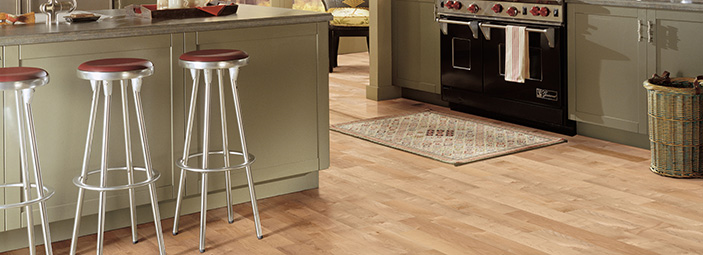
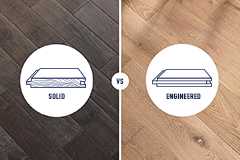 Solid vs Engineered Hardwood Flooring
Solid vs Engineered Hardwood Flooring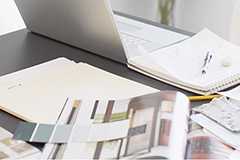 Guide To Choosing a Hardwood Floor
Guide To Choosing a Hardwood Floor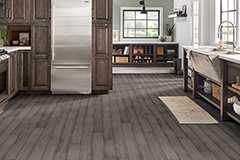 Hardwood Flooring Room Inspiration Guide
Hardwood Flooring Room Inspiration Guide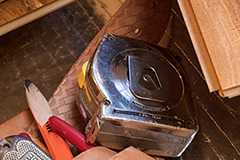 10 Things to Know About Hardwood Floor Installation
10 Things to Know About Hardwood Floor Installation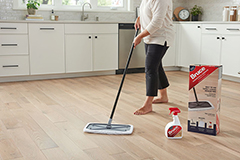 How To Clean and Protect Hardwood Flooring
How To Clean and Protect Hardwood Flooring